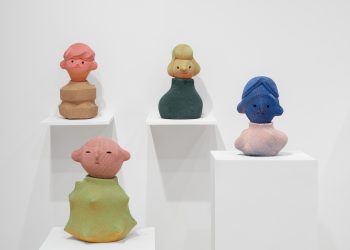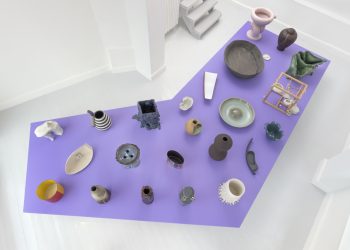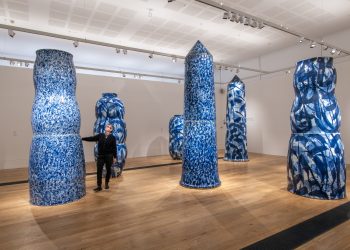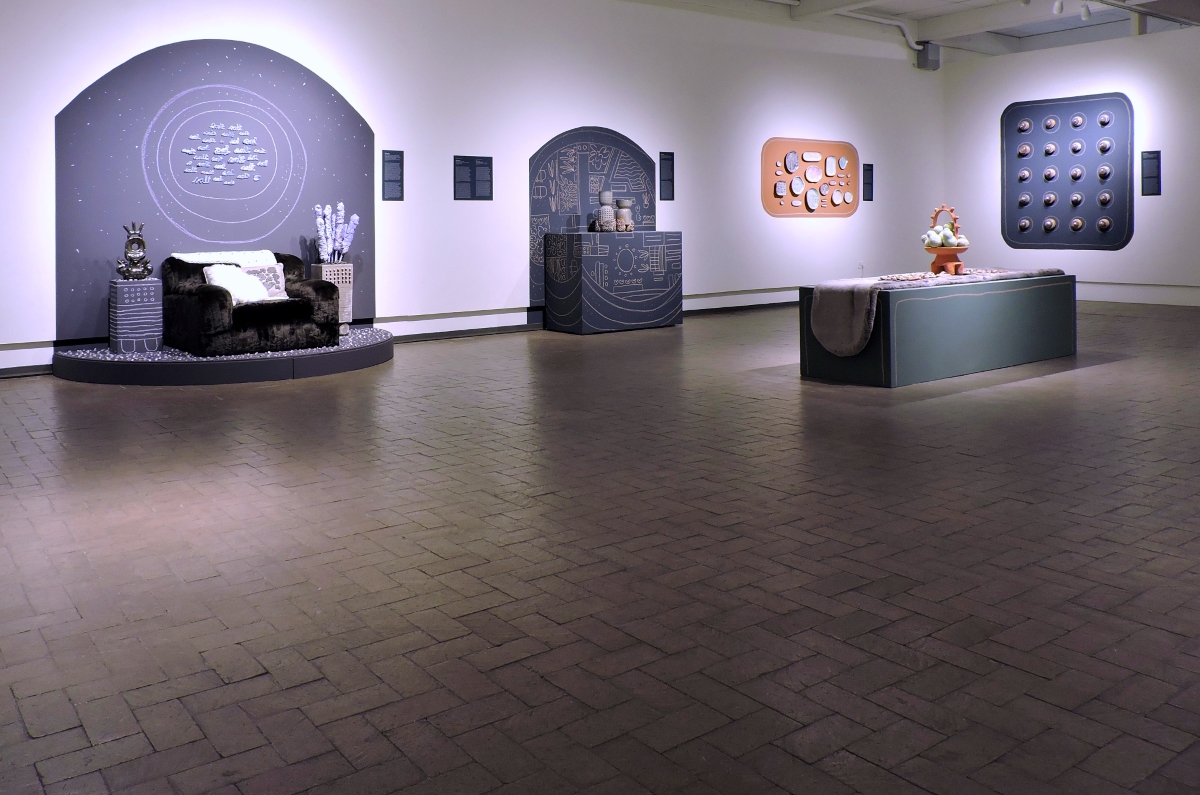
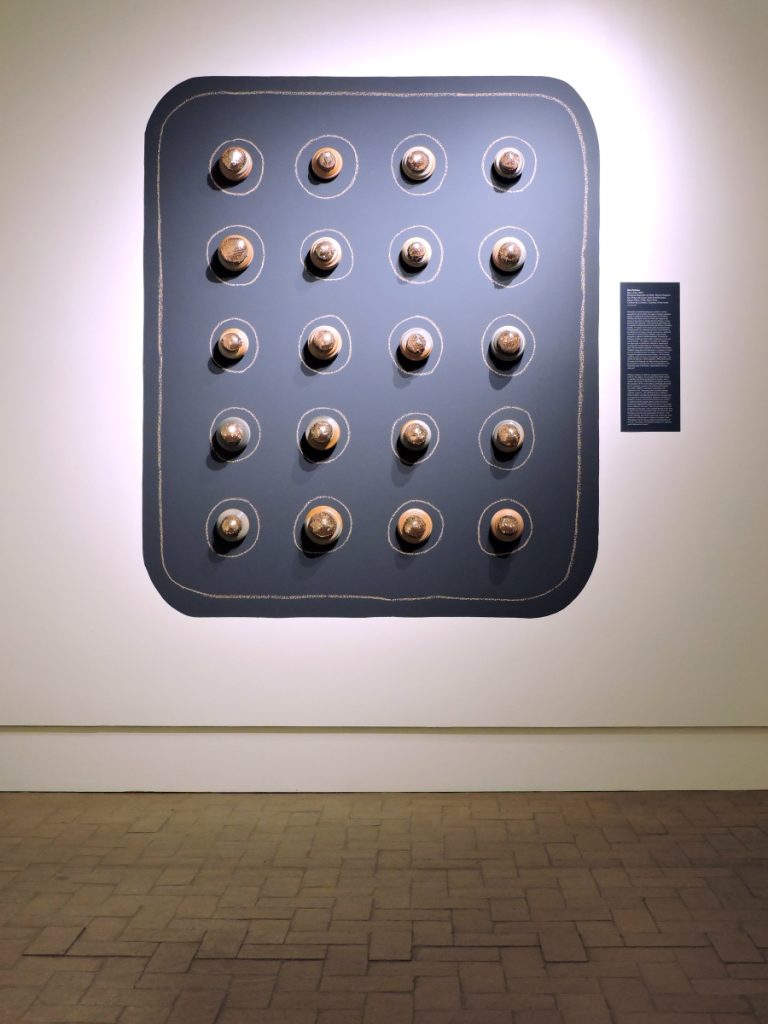
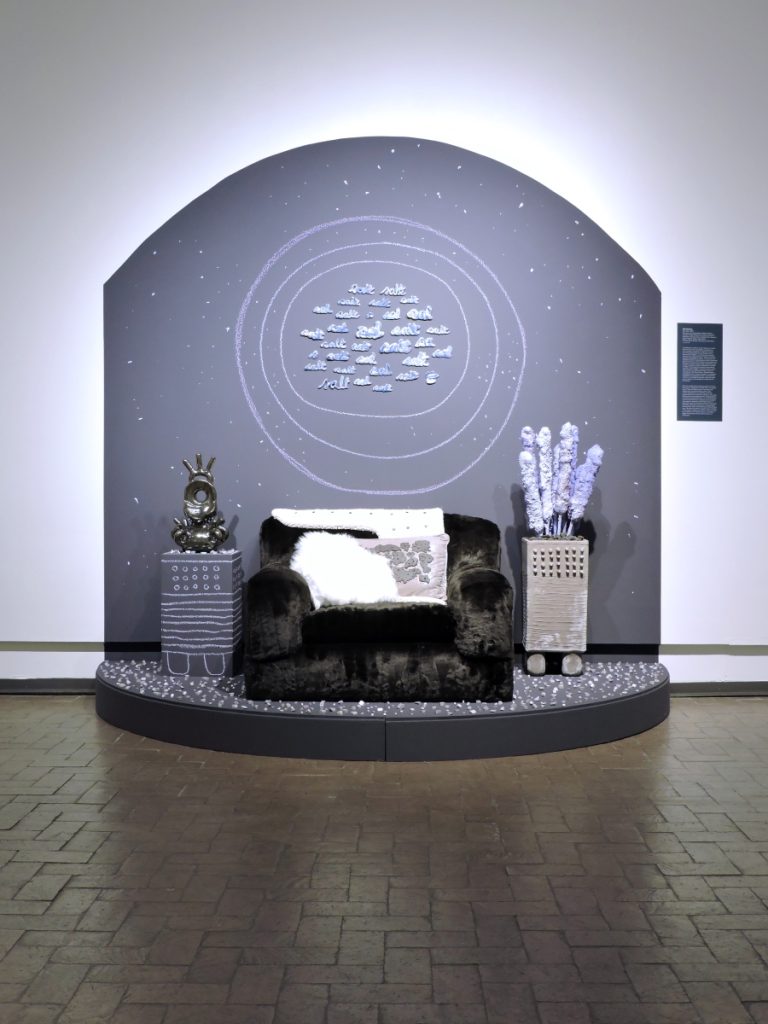
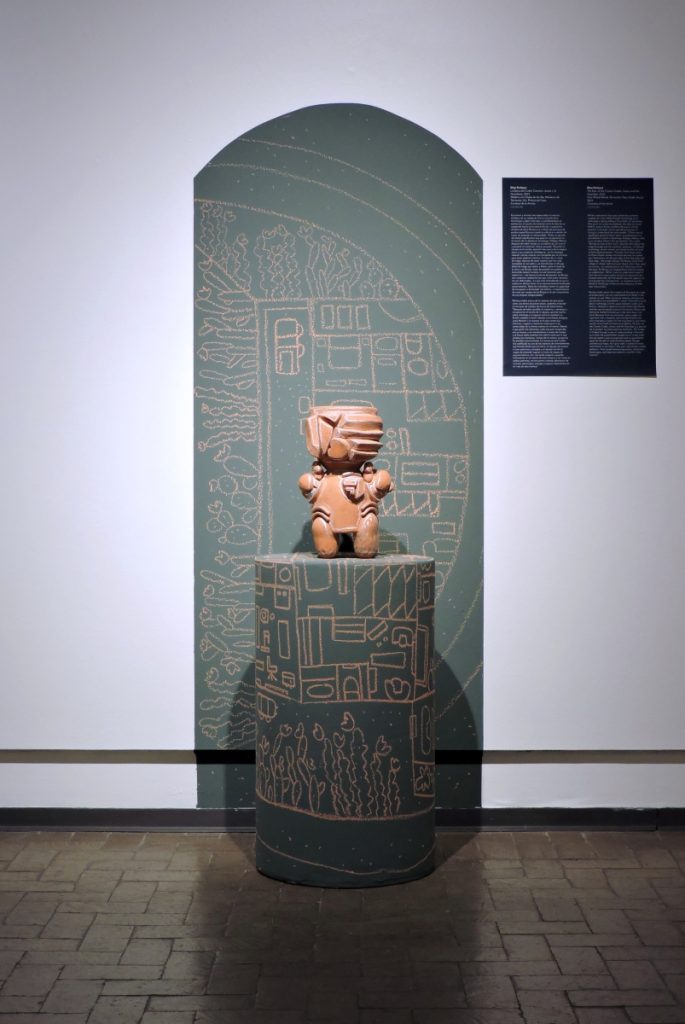
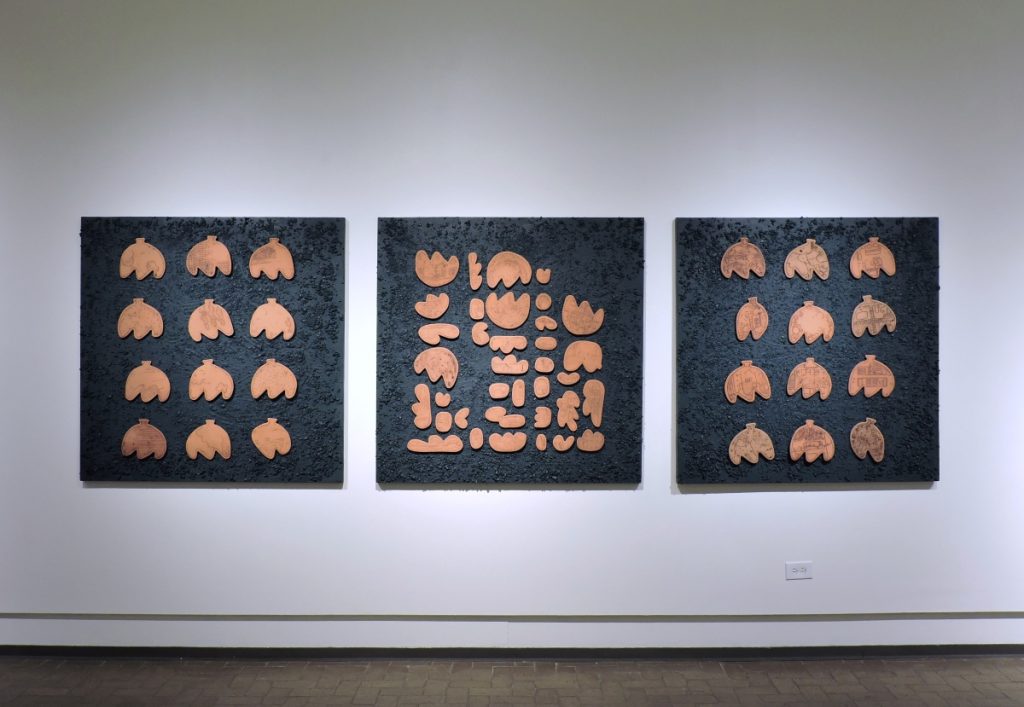
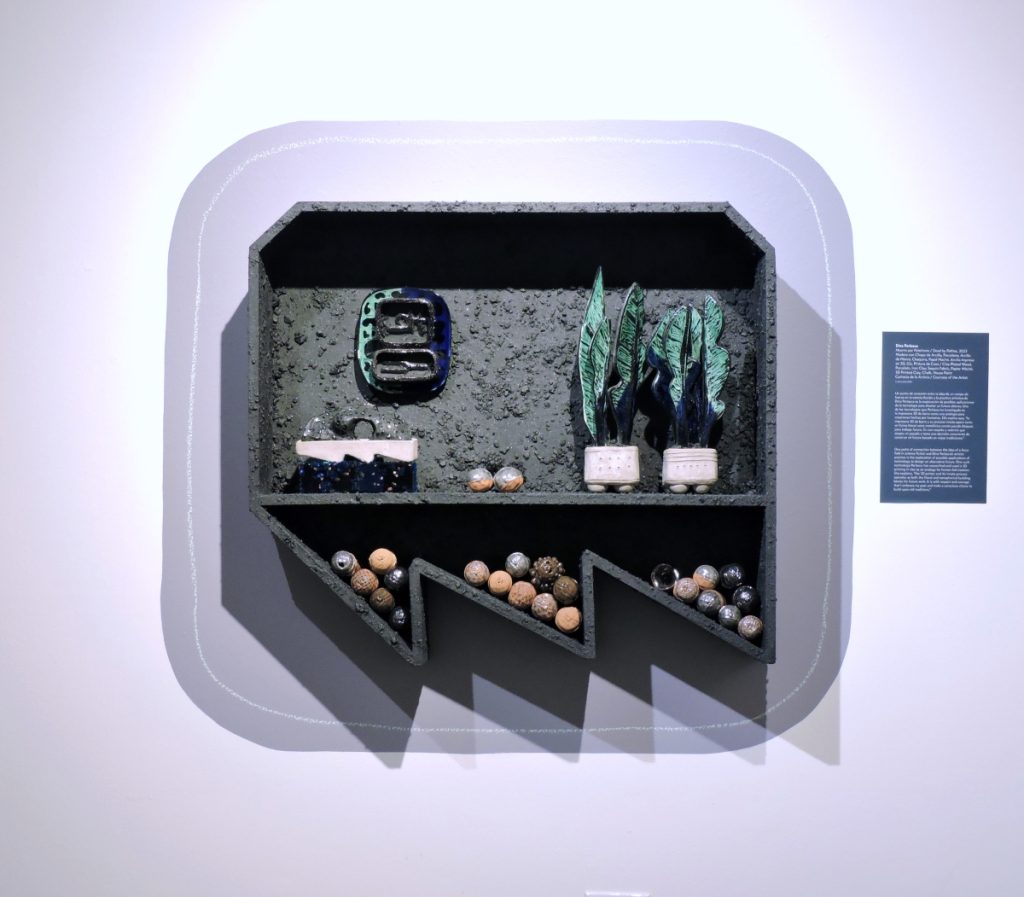
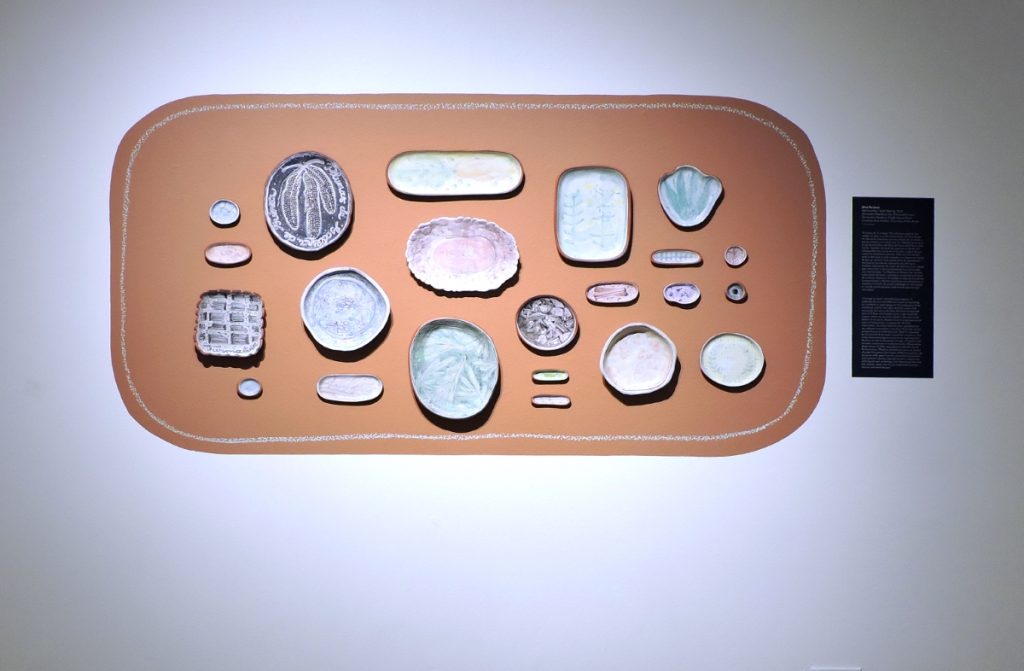
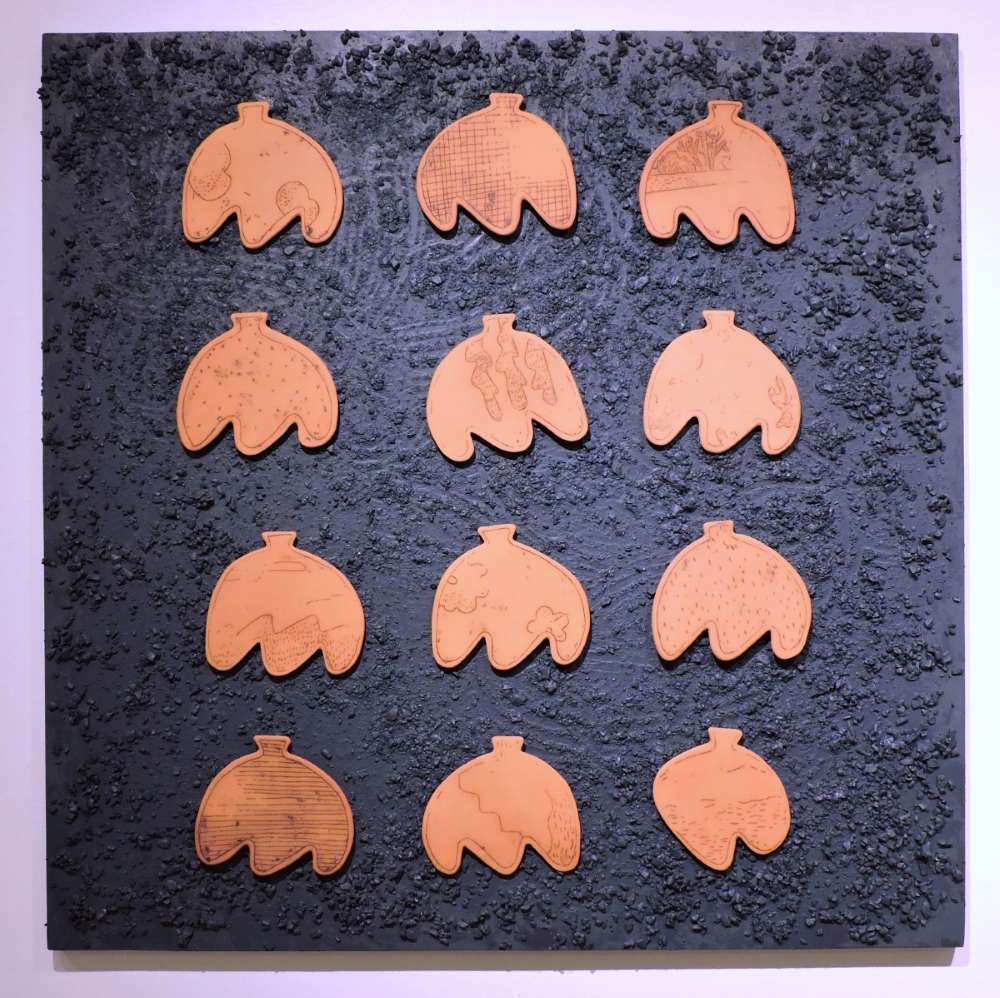
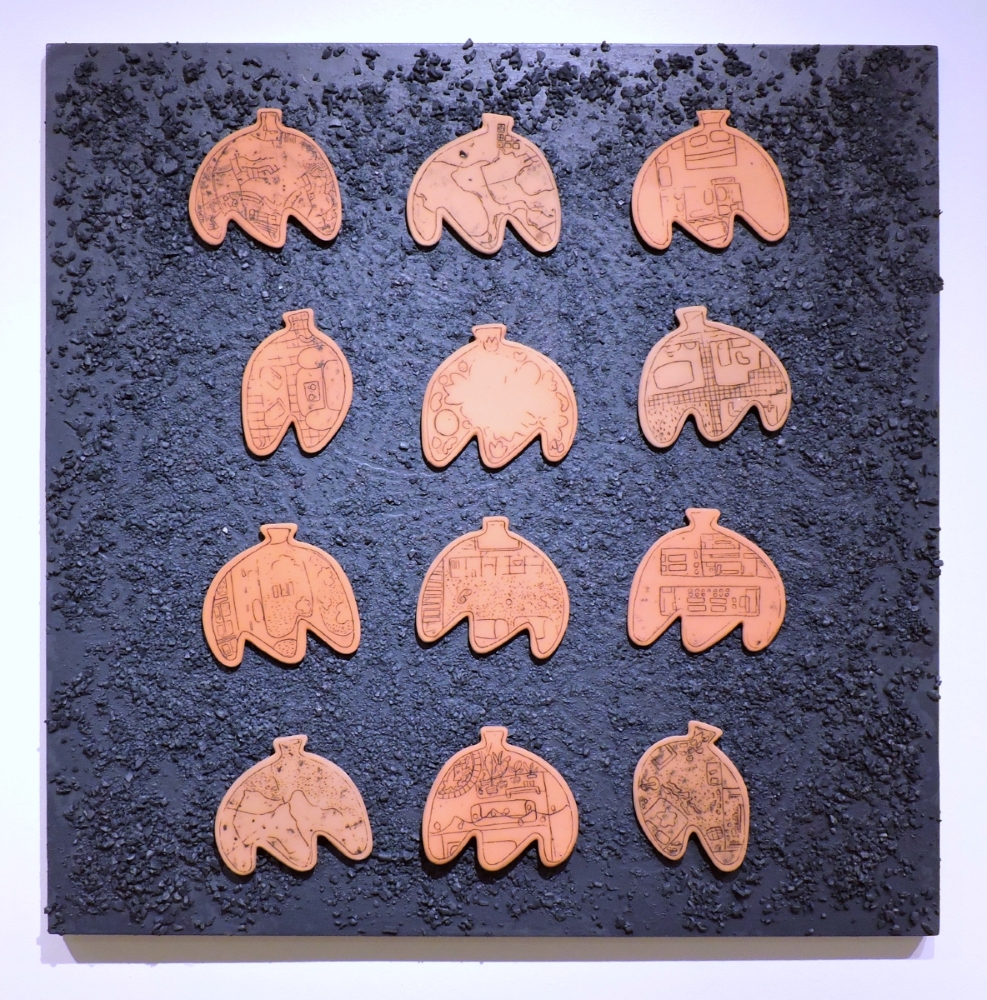
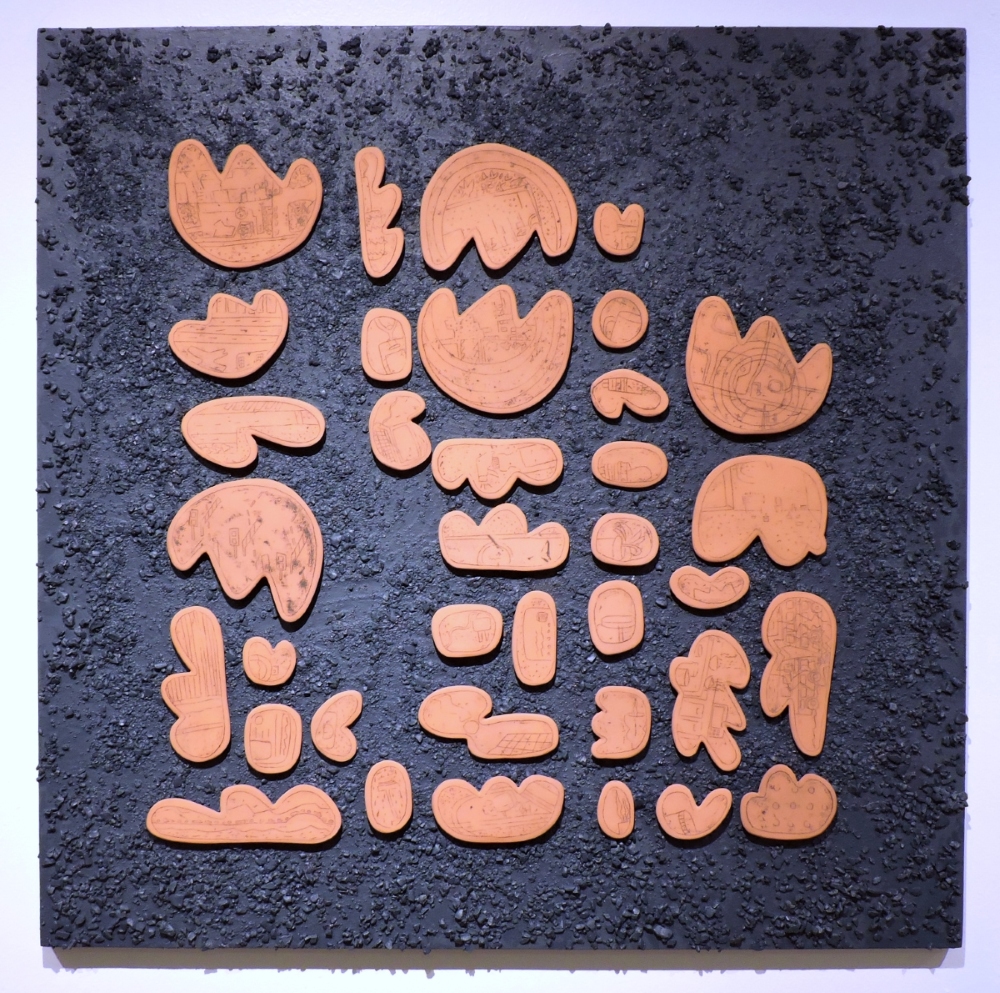
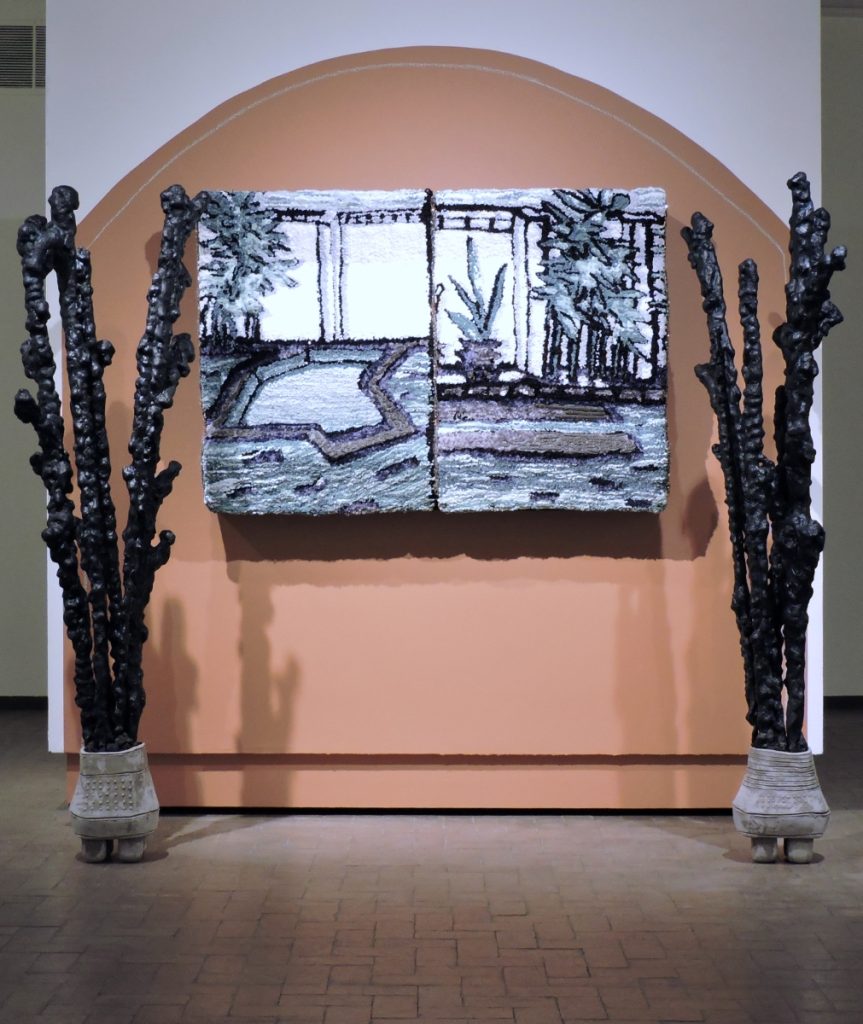
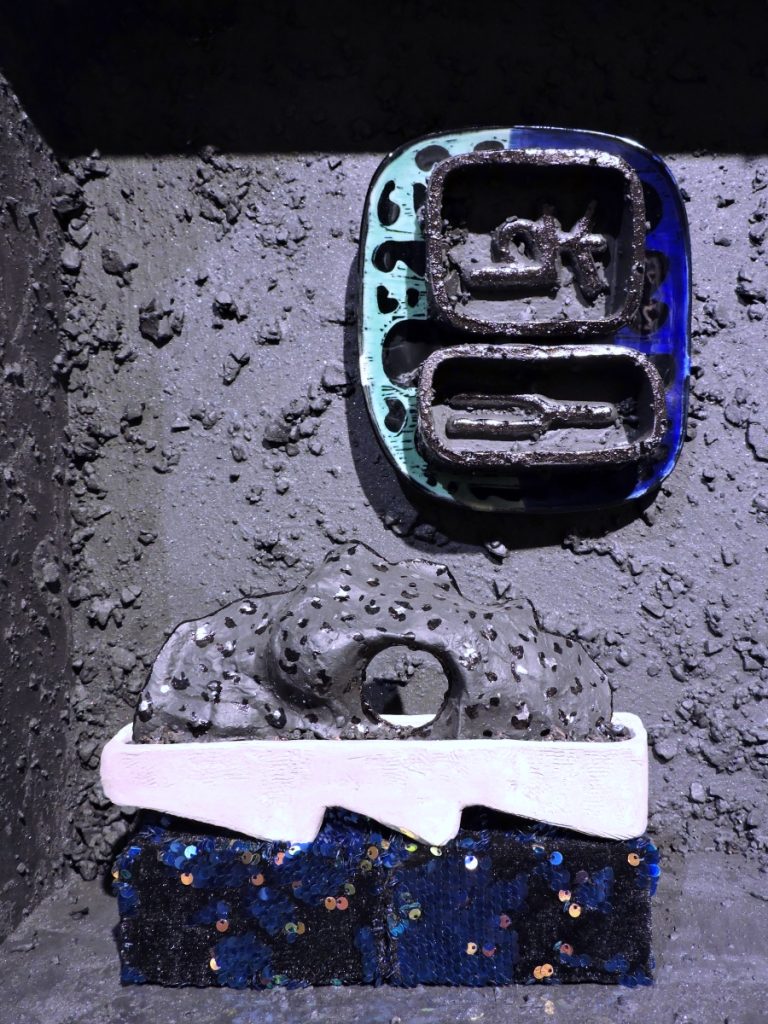
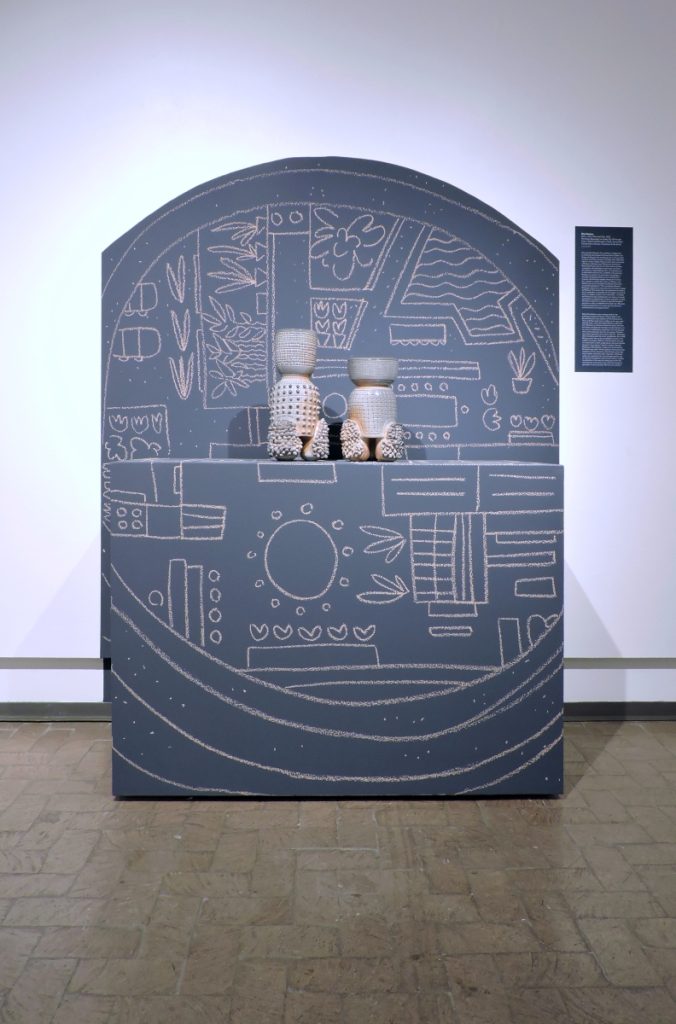
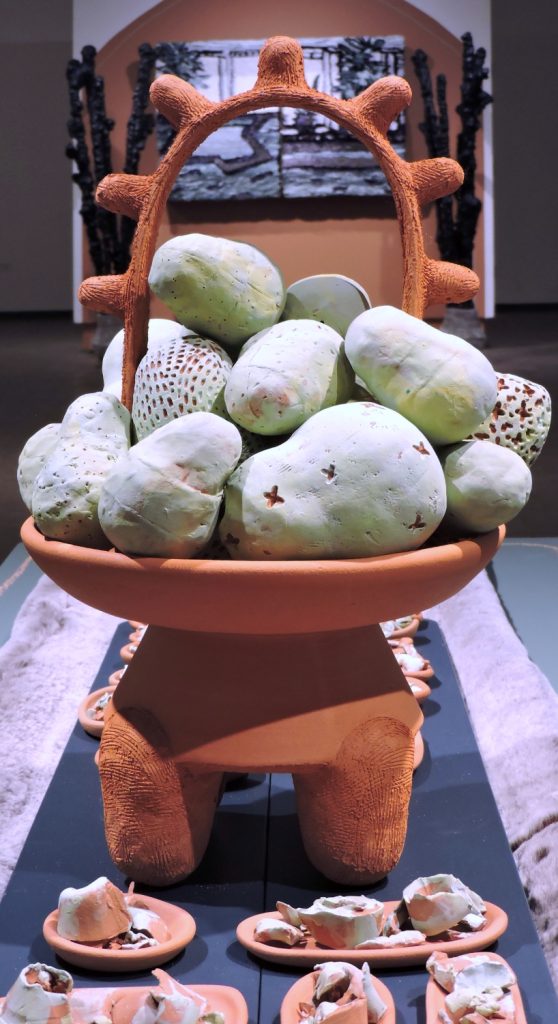
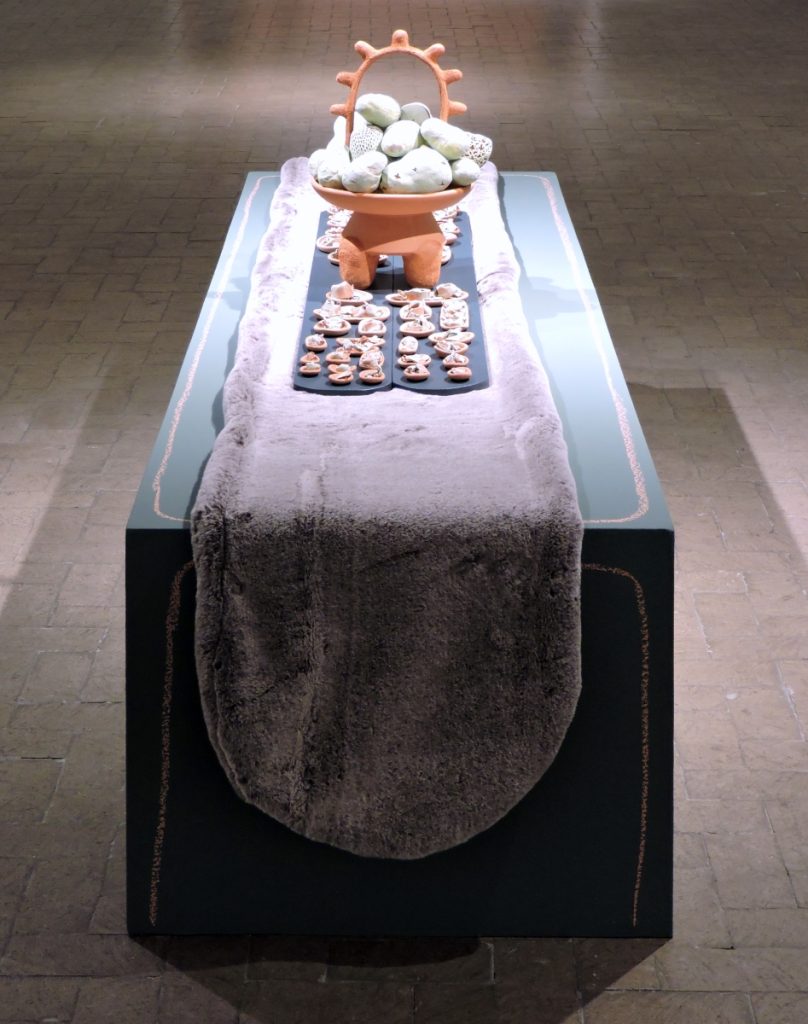
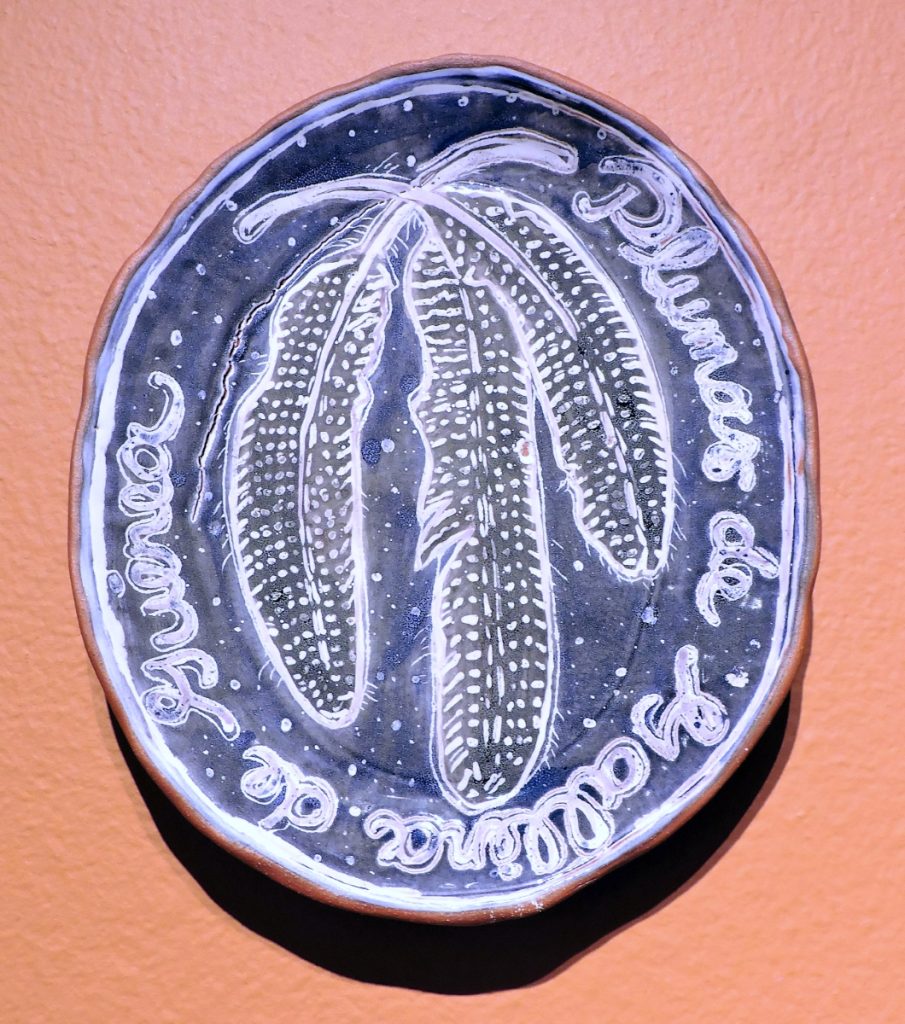
Dina Perlasca: Campos de Fuerza / Force Fields is on view at Roswell Museum, Roswell
June 17 – August 27, 2023
The Roswell Museum is pleased to announce the exhibition Dina Perlasca: Campos de Fuerza / Force Fields. The exhibition will be on view from June 17 through August 27 in the Roswell Museum’s Donald B. Anderson Gallery.
Dina Perlasca is a Mexican-American artist designing and building her own custom-made future by aggregating elements from both her ancestral past and present circumstances and desires.
The idea of a force field can be understood through a multitude of approaches, each of which can provide new layers of insight into Perlasca’s artistic concepts and materials. In physics, a force field is the space in which an inert object experiences movement as the result of impact with a force that does not make physical contact, such as gravity. In the 1981 book General Relativity from A to B, Robert Geroch explains “Gravity is the force of attraction between two objects. A gravitational force field models this influence that a… body… extends into the space around itself.” Magnetism is another example and is something Perlasca explores in her practice through her use of iron as a material. “Iron stone clay is made mostly of iron,” she says, “and it has so much of this material that it is magnetic. The origin of earth’s magnetic field is still a mystery, but we know that it makes earth unique, it sets the direction of our compasses and gives us our north, our sense of location as well as acting as a shield against solar winds that would erode our atmosphere otherwise. Iron stone clay as a material of choice reveals the powerful qualities it has as an armor and protector…”
If we can consider the non-physical impacts of forces like gravity or magnetism on things from a conceptual point of view, the objects from our everyday lives equally exert non-physical forces upon us due to their relationship to our memories and visible representations of our decisions, identities, and values. Perhaps even more significantly, the conceptualization of non-physical forces exerted on us can be thought of in terms of gravitational or magnetic pulls and pushes with regard to ideologies and invisible systems. “I believe that there are universal systems of engineering, spirituality, and practical practices, as these systems are functional, useful, and needed by all,” Perlasca says. “We share the need for a greater entity to believe in, the need for stability, the need for shelter, the need for nourishment, the need to hold on to something bigger than oneself, and the need to be part of a community.”
While the field of physics provides one of the earliest and most basic or fundamental understanding of this phenomenon, the most common usage and understanding of a force field is from the genre of science fiction where the basic concept from physics is applied more imaginatively. Writers and artists have speculated the synthetic creation of a force field through technology or an individual or being willing a force field into existence. The basic idea is the creation of a barrier, either visible or invisible, that is less of a natural phenomenon and more of an intentional creation to deflect external energy or disintegrate approaching objects, to hide or protect oneself or something, to provide space to sustain life in an uninhabitable locale, or some combination thereof.
One point of connection between the idea of a force field in science fiction and Perlasca’s artistic practice is through culture-specific processes of trying to understand the unknowable. “[There was a] significant period of time I spent recuperating at my grandfather’s ranch in Xicalango, Hidalgo, México, after a car accident where I lost my memory,” she recalls. “During my time at the ranch, I learned more about the magical jungle and the mythical creatures… In Náhuatl mythology, certain women are chosen by the universe to have mystical powers. Through a fire ritual, some of these chosen women who have become corrupted turn themselves into Brujas, balls of fire that jump and float atop… the jungle canopy. The Brujas travel from village to village seeking human blood, which they need to survive… an undying and an evil inheritance from the past, the Brujas are shapeshifters that live among us undetected… What I came to understand myself is that the evil in such myths should not necessarily be located externally. All individuals have the capacity to incorporate the inherited evil… or resentful hunt for blood of the Brujas if they are not conscious of their own insecurities.” Another point of connection between the idea of a force field in science fiction and Perlasca’s artistic practice is the exploration of possible applications of technology to design an alternative future. One such technology Perlasca has researched and used is 3D printing in clay as an analogy for human-led creation. She explains, “the 3D printer and its innate process operates as both the literal and metaphorical building blocks for future work. It is with respect and courage that I embrace my past and make a conscious choice to build upon old traditions.”
Courageously designing one’s own future by, in part, respectfully embracing inherited traditions, provides a connection point to a third perspective on force fields. In the social sciences, the practice of force-field analysis investigates social forces that can help or hinder progress in relation to a goal. Social psychologist Kurt Lewin developed this concept as a way to understand the multitude of forces in an environment at a particular point in time. This environment can be understood as a dynamic network of influences upon overlapping psychological (individual) and social (group) consciousnesses. Anxieties, goals, ideals, moods, motives, needs, and values are all examples of potential factors comprising an individual’s or group’s “field.” According to Lewin, when a “field” experiences change due to exposure to external stimuli (possibly from interaction with the “field” of another individual or group), the resulting “boundary zone” impact leads to some notion of progression or regression.
“Through my work,” Perlasca explains, “I celebrate the love and affection I have for my family, for my Méxican upbringing, for the landscapes of my childhood, and for the colors and the culture that surrounds me now in the Paso del Norte borderland area of El Paso and Ciudad Juárez. I also recall the regions where my ancestors dwelt in the past in the depths of my spirit, despite never having experienced some of those places in waking life. All that information, all of that data has been uploaded into my software even before I was born.” From the artist’s perspective as an individual, her “field” is impacted by the stimuli of the region and of her ancestors. This richly textured background serves as inspiration for Perlasca as well as the points of origin of motifs in her artwork, consciously or subconsciously influenced by these stimuli. Further expanding on specific stimuli, Perlasca says, “Majolica and talavera serve as a point of pride throughout the history of Méxican pottery, yet my works shift away from the conventional coloration and authentic designs typically found in majolica by utilizing my own symbology and integrating them into the vessels, rather than to use traditional intricate, heavily saturated designs.”
Taking a moment to shift our perspective from the artist to the region, we can also apply force-field analysis to the Paso del Norte borderland as another way to explore the themes in Perlasca’s artistic practice. As a product of the environment, artificially polarized by the synthetic creation of the México/US border, the artist’s “field” is constantly interacting with elements of this “boundary zone” (and the related cultural, economic, and political forces). Taking in these multiple, overlapping experiences of progression and regression simultaneously, Perlasca’s resulting in-between, uncanny environment births a new culture. “I celebrate all the people, places, and cultures my family has inhabited throughout the story of our linear time in history,” she says. “I do not only respond to the aesthetics of the past, I also respond deeply to the time in which I live, the environment that surrounds me, and the future I envision for generations to come… I was raised Catholic, yet I have a particular connection and attraction to Mesoamerican figures and pagan idols. Throughout my life many creatures and characters of this sort have been manifested as prayers for safe and joyful alternative futures.” As such, one could consider the complex environments Perlasca creates in the gallery as a fusion of many different conceptual and material ingredients to encourage us all to imagine possible alternative futures for the “boundary zone” overshadowing many aspects of our region.
Dina Perlasca lives with her three children in the Paso del Norte region comprising El Paso, Texas in the United States and Ciudad Juárez, Chihuahua in México. Perlasca has ventured into personal creative adventures such as being the ranch manager for two years at her grandfather’s Hacienda Xicalango in the middle of the Huastecan jungle mountains, at the heart of México’s State of Hidalgo. She received her BFA in Ceramics with a minor in Metalsmithing from The University of Texas at El Paso in 2018 and her MFA in Ceramics from New Mexico State University in Las Cruces in 2022. Perlasca holds the Student Director At Large position for the 2021 – 2023 National Council on Education for the Ceramic Arts. She is currently teaching undergraduate ceramics and design at The University of Texas at El Paso, New Mexico State University, and Eastern New Mexico University in Portales.
Perlasca has an active studio practice at Bravo Studios in the Research Interdisciplinary Building at The University of Texas at El Paso. She is constantly exhibiting her artwork regionally and nationally. Perlasca’s work has been included in exhibitions in California, New Mexico, Ohio, and Texas. She was a 2019 Artist-in-Residence at La Union Elementary School in Sunland Park, New Mexico and has served as President of the Virtual Clay Collective since 2021. Perlasca’s solo exhibitions include Under My Skin at The University of Texas at El Paso’s Glass Gallery in 2018 and Hybrid at the New Mexico State University Art Museum in 2021.
Contact
a.wilder@roswell-nm.gov
Roswell Museum
Donald B. Anderson Gallery
1011 N. Richardson Ave.
Roswell, NM 88201
United States
Photos courtesy of the artist and the Roswell Museum




